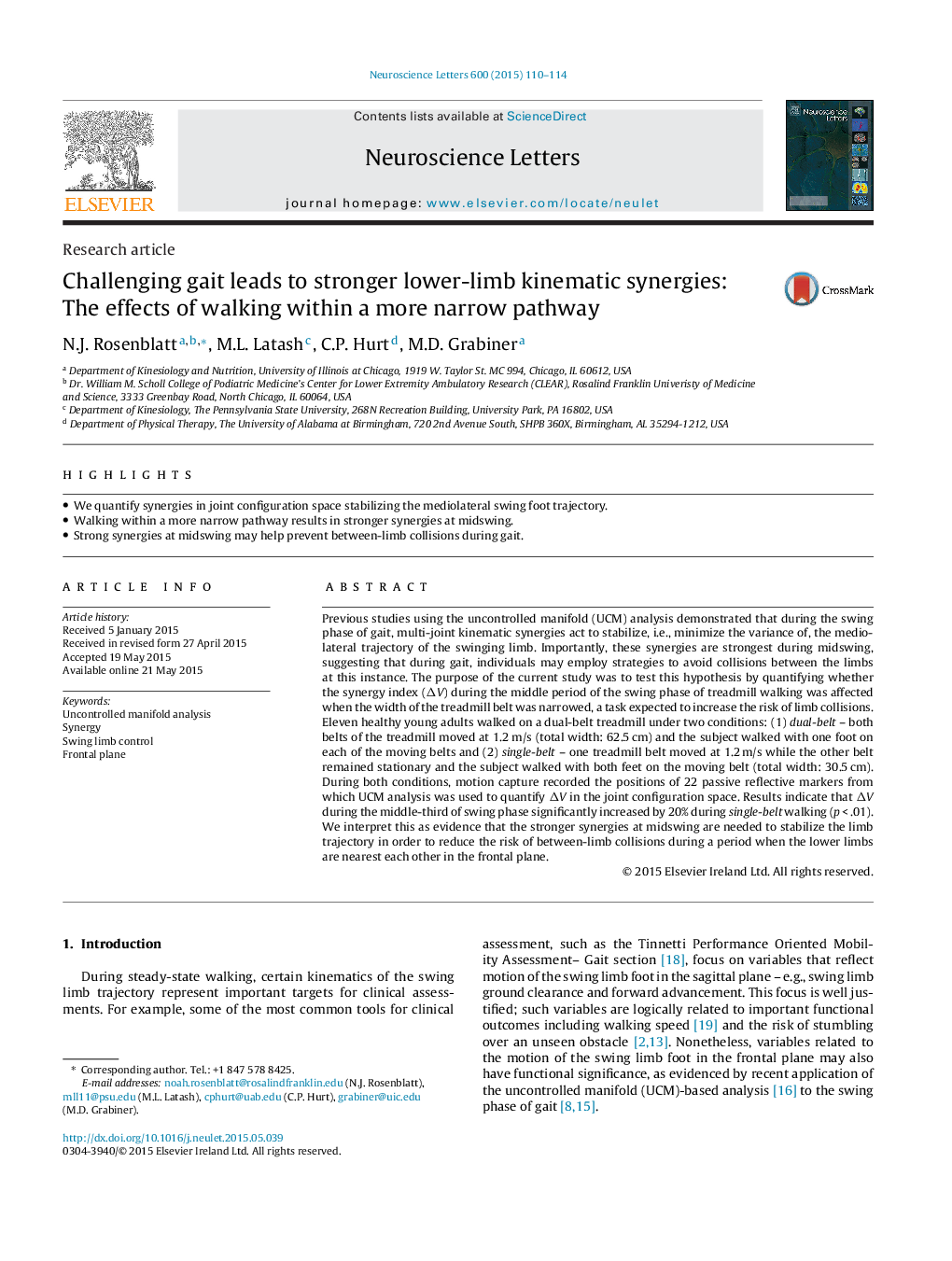| Article ID | Journal | Published Year | Pages | File Type |
|---|---|---|---|---|
| 4343394 | Neuroscience Letters | 2015 | 5 Pages |
•We quantify synergies in joint configuration space stabilizing the mediolateral swing foot trajectory.•Walking within a more narrow pathway results in stronger synergies at midswing.•Strong synergies at midswing may help prevent between-limb collisions during gait.
Previous studies using the uncontrolled manifold (UCM) analysis demonstrated that during the swing phase of gait, multi-joint kinematic synergies act to stabilize, i.e., minimize the variance of, the mediolateral trajectory of the swinging limb. Importantly, these synergies are strongest during midswing, suggesting that during gait, individuals may employ strategies to avoid collisions between the limbs at this instance. The purpose of the current study was to test this hypothesis by quantifying whether the synergy index (ΔV) during the middle period of the swing phase of treadmill walking was affected when the width of the treadmill belt was narrowed, a task expected to increase the risk of limb collisions. Eleven healthy young adults walked on a dual-belt treadmill under two conditions: (1) dual-belt – both belts of the treadmill moved at 1.2 m/s (total width: 62.5 cm) and the subject walked with one foot on each of the moving belts and (2) single-belt – one treadmill belt moved at 1.2 m/s while the other belt remained stationary and the subject walked with both feet on the moving belt (total width: 30.5 cm). During both conditions, motion capture recorded the positions of 22 passive reflective markers from which UCM analysis was used to quantify ΔV in the joint configuration space. Results indicate that ΔV during the middle-third of swing phase significantly increased by 20% during single-belt walking (p < .01). We interpret this as evidence that the stronger synergies at midswing are needed to stabilize the limb trajectory in order to reduce the risk of between-limb collisions during a period when the lower limbs are nearest each other in the frontal plane.
